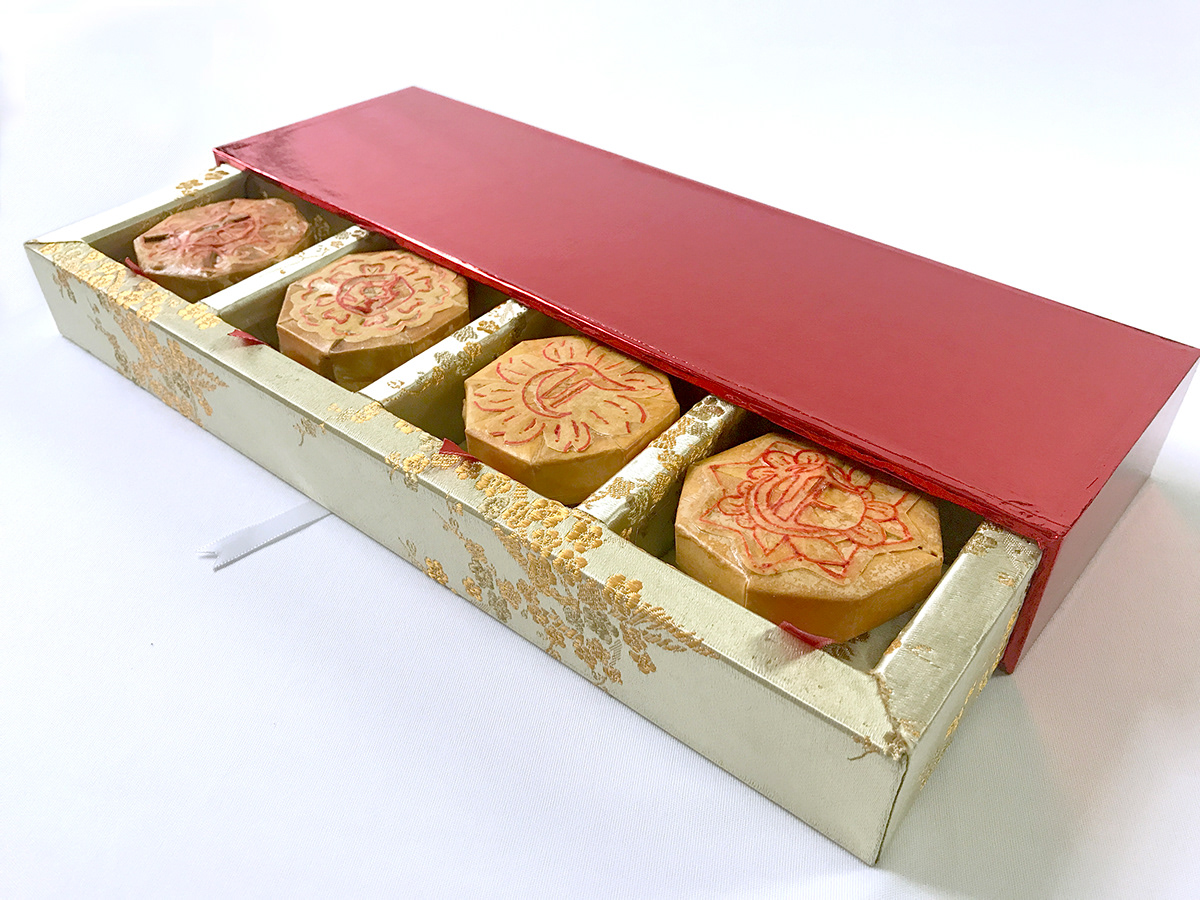
"Mooncakes for Democracy" 2020
Exterior: 15" x 4.5" x 2" Mooncakes: 3" x 3" x 0.75"
Ingredients: rice paper, cooked red adzuki bean soaking liquid, egg wash, red food coloring, excerpts from the US Declaration of Independence, and mixed media






In Chinese tradition, the mooncake is an important part of the Mid-Autumn Festival celebrating the harvest moon. The pastry is traditionally made with a thin, golden-brown flour and egg-wash exterior that has been elaborately molded, and an interior made of a sweet, dense paste from ingredients such as red bean, mung bean, and lotus seed.
One legend about mooncakes tells the story of how they were used as a tool for revolution.
After the barbaric Mongols controlled China, they established harsh rules and were merciless to everyone who resisted. The Mongol emperor’s ruthlessness and thirst for more power led him to ignore the people as disease and famine spread throughout China. He had a great distrust for everyone and killed all the nobles, appointing only his closest family members to important positions to aid in his governmental decisions. Finally, a commander of the rebel forces came up with an idea to save the people: The rebels would spread a rumor about a terrible illness and the only way for the people to prevent it would be to eat special mooncakes. These mooncakes hid secret messages inside and the rebels, disguised as merchants and commoners, would distribute the mooncakes throughout the land. The Mongols did not like mooncakes, so they never discovered the secret messages hidden inside the mooncakes alerting the people to take part in an uprising on the fifteenth-day of the eighth lunar month, which was the Mid-Autumn Festival. On the day of the Mid-Autumn Festival, the people, led by the rebels, came together and overthrew the Mongol tyrant. From there onward, people celebrated the Mid-Autumn Festival every year with mooncakes.
I wondered how this story would translate to a democratic nation in which Asian Americans made up for around 6% of the US population. I’m greatly aware of the disenfranchisement and voter harassment experienced by many BIPOC voters, including Asian Americans, who believed that our votes didn’t matter to a governing body made of mostly older white American men. My own enthusiasm for understanding American history and government, dating as far back as to my fifth grade US social studies class, conflicted with my present experience. The nation’s founding fathers wrote into the Declaration their reasons for separating from a tyrannical ruler, outlining a number of actions which, ironically, were repeated by the 45th president. The denunciation of these actions, named as violations of human rights, promised a freer nation, a belief that brought many immigrants to this country. Yet, nonwhite immigrants repeatedly found themselves most subjected to these same violations for decades, resulting in constant battles for human civil rights and a disenfranchised group of diasporic people.
Is it possible to remind Asian Americans that our strongest voice and greatest form of protest comes from our votes?


